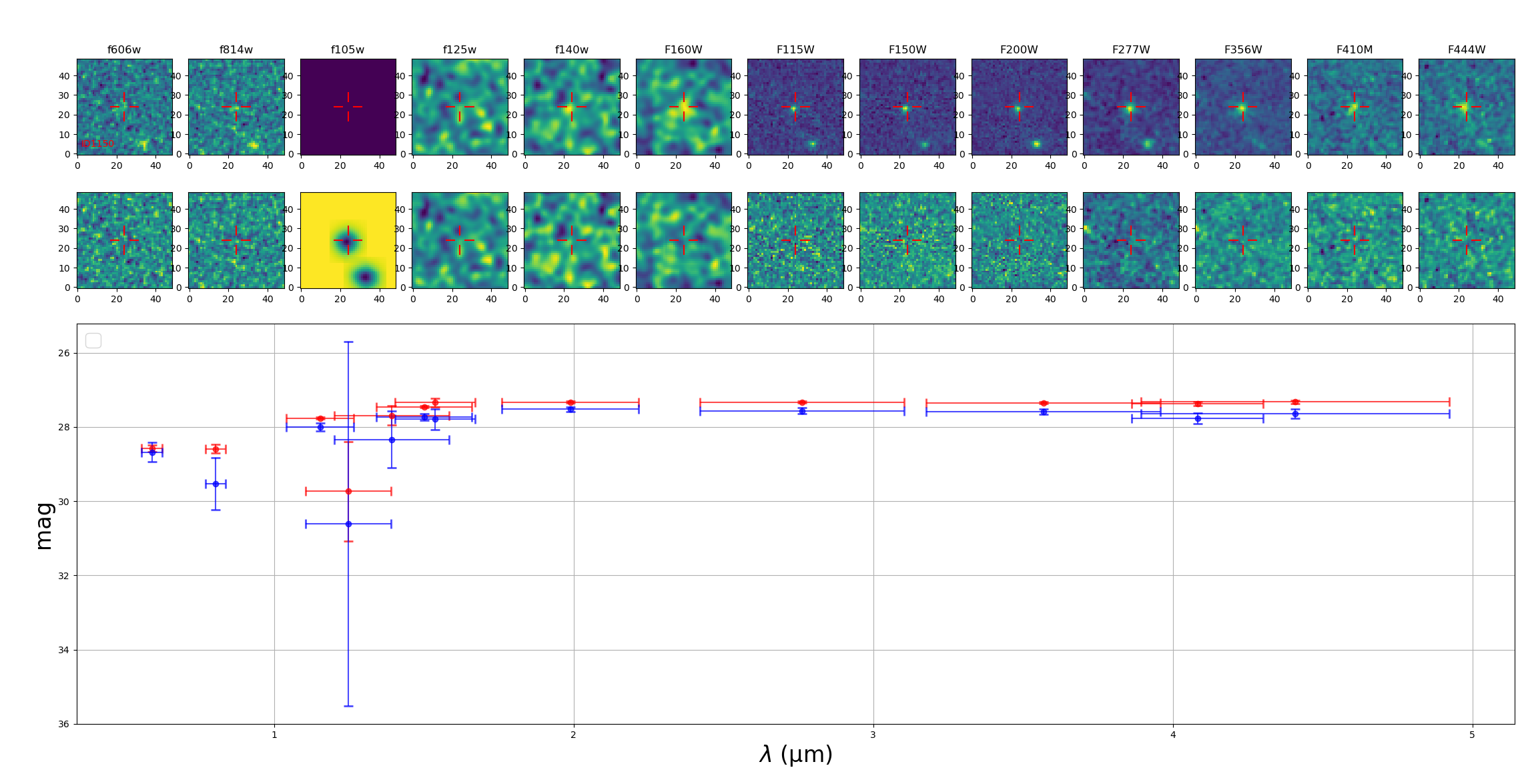Replies: 1 comment 1 reply
-
Beta Was this translation helpful? Give feedback.
1 reply
Sign up for free
to join this conversation on GitHub.
Already have an account?
Sign in to comment

Uh oh!
There was an error while loading. Please reload this page.
Uh oh!
There was an error while loading. Please reload this page.
-
Hi SourceXtractor++ community,
As you probably know by now, I'm extensively using SE++ to make catalogs in multi-band model fitting mode in images from JWST, HST, HSC and UVISTA.
I encounter an issue that becomes more severe in photo-z fitting codes regarding model flux uncertainties in the multi-band fitting mode. In particular, we find that for many faint sources near the depth of the band have a model uncertainty that is very small.
For example, a source that is detected in JWST NIRCam bands (from 1.15 to 4.4 microns) and not in the optical bands can have a U-band flux and error of f=1.9983e-38 ef=8.7781e-52 (mag: 45.6559 mag_err: 4.77056e-14). Such cases can of course be handled and removed 'manually' but that comes at a cost when we just want to compute photo-z for a large catalog.
How are model errors computed for sources? How are models handled in a multi-band fitting case where an object is a dropout in some bands?
Here are some examples of multi-band model fitting with dropouts. As you can see, if a source is detected in the chi2 detection image, a model is forced even in the bands where it is not detected. The scale of the images is automatic, so that's why in the model image it appears very bright, but the residual is usually clean.
It will be very useful if you can give me some insight into how model errors are computed and how this is dealt with in dropout bands.
Thanks!
Beta Was this translation helpful? Give feedback.
All reactions